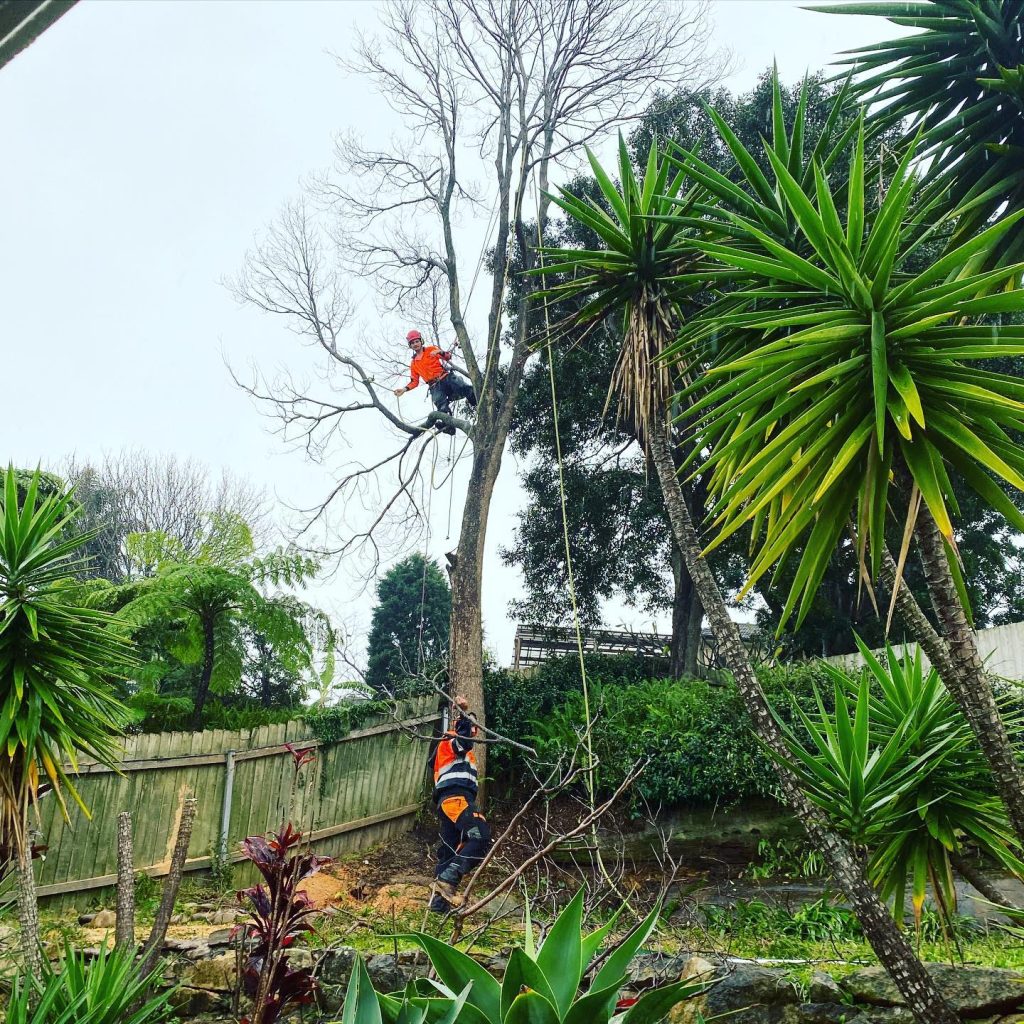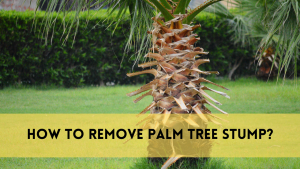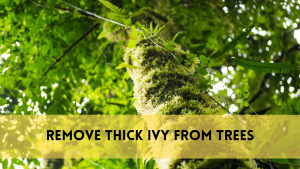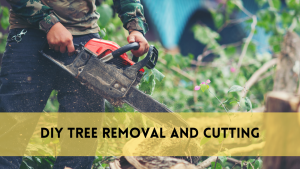Banana trees are extremely important in many cultures and ecosystems throughout the world. These tropical plants are prized not just for their tasty fruit, but also for their adaptability and benefits to agriculture and the environment. Learn how to remove banana trees.
The importance of Banana Trees:
Banana trees are a mainstay in many people’s diets across the world, offering a nutrient-dense and conveniently available source of food. Their fruits are not only tasty, but also high in vitamins, potassium, and fiber. Banana leaves are utilized for a variety of reasons, from cooking and serving food to wrapping and sheltering.
These trees are also important in the ecology because their leaves disintegrate and nourish the soil, contributing to soil health. Banana trees also offer shade and help control local temperatures, promoting biodiversity in their environs.
Reasons for Remove Banana Trees:
Despite their various advantages, there are some conditions that necessitate the removal of banana trees. Disease or pest infestation, overgrowth causing property damage, landscape modifications, or the necessity to replant or rebuild the area are all reasons for removal.
Understanding the value of banana trees as well as the probable reasons for their removal is critical when determining how to properly remove these tropical plants.
Preparing to Remove Banana Trees
Before initiating the removal process for banana trees, it’s essential to take certain preparatory steps to ensure a safe and efficient procedure.
Assessing Tree Condition:
Begin by closely examining the banana tree’s condition. Look for signs of disease, pest infestation, or structural damage. Assessing the tree’s health helps in determining the best approach for removal and whether the tree can be salvaged or needs complete removal.Check for any hazards such as leaning or unstable branches that might pose risks during the removal process. Understanding the tree’s condition is vital for planning the removal strategy effectively.
Necessary Tools and Equipment:
Having the appropriate tools and equipment is crucial for a successful removal. Some essential tools for removing banana trees include:
- Pruning Saw or Axe: For cutting down the tree efficiently.
- Shovel or Spade: To dig around the tree’s base and expose the roots.
- Protective Gear: Safety goggles, gloves, and sturdy footwear to protect against injuries.
- Tarp or Sheet: For gathering and disposing of tree debris.
How to remove banana trees
Methods for Removing Banana Trees
Removing banana trees involves a strategic approach to ensure effective removal while minimizing the chances of regrowth and potential risks. Several methods can be employed to remove a banana tree, each with its own steps and considerations:
1. Cutting Down the Tree
Assessment :Before cutting, evaluate the tree’s size, lean, and potential falling direction. Use a pruning saw or axe to make controlled cuts on the trunk, starting from the top and moving downwards. Ensure precise cuts to manage the tree’s fall direction safely.
Safety measures: Prioritize safety by securing the area, wearing protective gear, and having a clear escape route planned in case of unforeseen tree movements.
2. Digging Up the Roots:
Exposing the roots: Use a shovel or spade to dig around the base of the tree, exposing the root system. Remove as much soil as possible to access the roots effectively.
Cutting and removal: Cut through the major roots using pruning shears or an axe, gradually removing the roots. Take care not to damage nearby structures or plants while extracting the roots.
3. Chemical Removal Options:
Herbicide: Apply selective herbicides to the tree stump or root system to prevent regrowth. Follow the manufacturer’s instructions meticulously and consider the environmental impact of using chemicals.
Chemical decomposition: Certain chemical solutions aid in accelerating the decomposition of the tree stump, making it easier to remove.
Each method requires attention to detail, consideration of safety measures, and an understanding of the tree’s condition and surroundings. It’s essential to choose the most suitable method based on the tree’s size, location, and the resources available for effective and safe removal of the banana tree.
Safety Measures During Removal Process
To avoid accidents and injuries, it is critical to ensure safety while removing banana trees. Prioritizing certain safety procedures considerably reduces hazards throughout the removal process. To begin, wearing suitable protective equipment, such as safety goggles to guard the eyes from debris, gloves to protect hands, and strong boots to prevent injury from falling branches or tools, is critical. Second, using cutting equipment like pruning saws or axes with caution and keeping them sharp and in excellent shape helps prevent accidents. Furthermore, removing the working area of any obstructions or waste decreases possible dangers. Furthermore, maintaining watchful and concentrated during the procedure, keeping an eye out for any unexpected movements or changes in the tree’s stability, is critical. Individuals can save money by strictly following these safety precautions.
Disposal of Banana Tree Waste
It is critical to dispose of banana tree trash appropriately in order to reduce environmental damage and efficiently utilize the tree’s organic components. Composting is an environmentally favorable practice. To speed up decomposition, cut the tree into smaller pieces. The organic matter from the tree, including the leaves, stems, and trunk, enhances the compost and contributes to soil fertility. Additionally, repurposing the tree trash as mulch for gardening or landscaping provides another sustainable disposal alternative. Mulch helps to maintain soil moisture, regulates temperature, and prevents weed development. Finally, researching local green garbage disposal providers or authorized collection sites will assist assure correct disposal while adhering to local requirements for ecologically friendly waste management. Using these procedures guarantees that banana tree trash is disposed of in an efficient and environmentally responsible manner.
Post-Removal Care for the Area
After removing a banana tree, it is critical to maintain a clean and safe environment while avoiding any regrowth. Begin by cleaning the cleared area carefully, removing any leftover tree debris such as roots, branches, and leaves. Protect the area by covering it with mulch or a plastic tarp to prevent regrowth. Monitor the site on a regular basis for any evidence of new shoots or roots that may signal regrowth, and handle them as soon as possible to avoid re-establishment. Consider soil enhancement practices include applying soil amendments or fertilizers to improve soil quality for future usage. By following these post-removal maintenance actions, the cleared area may be kept free of regrowth and ready for new landscaping or other uses, all while maintaining cleanliness and safety.
When to remove banana tree
The best timing to remove a banana tree is determined by a variety of factors. If the tree shows evidence of serious illness, insect infestation, or irreparable damage, it should be removed. Furthermore, if the tree’s growth interferes with structures or creates a safety danger, removal may be required. Regularly assess the tree’s health and determine whether or not to remove it if it no longer fulfills its purpose or if landscape improvements are planned. Removing the tree during its dormant season, which is usually in late winter or early spring, may help the process and prevent regrowth. Consultation with a local arborist or tree consultant might give important advice on the best time to remove a tree.
FAQS
Can I transplant a banana tree rather than cutting it down?
Yes, if the tree’s position needs to be changed, transplanting is a possible option to full removal.
Is it possible to dispose of banana tree trash in an ecologically appropriate manner?
Composting tree trash is an environmentally friendly approach that improves soil health.
Is it safe to remove banana plants using chemicals?
To avoid environmental harm, chemical cleanup methods should be used with caution and in accordance with the manufacturer’s recommendations.
What measures should I take before cutting down a banana tree?
Wear safety equipment such as gloves and goggles to avoid injury during the removal procedure.
Is it possible to prevent regrowth after destroying a banana tree?
Yes, regrowth may be successfully stopped by ensuring adequate cleaning and implementing preventive steps.
Conclusion
Finally, removing banana trees necessitates meticulous planning and execution. Understanding procedures such as cutting, digging up roots, and chemical treatment is critical. Post-removal maintenance, including trash disposal and preventive measures, guarantees a clean and regrowth-free environment. Consider options such as transplanting for long-term tree management.
How useful was this post?
Click on a star to rate it!
Average rating 0 / 5. Vote count: 0
No votes so far! Be the first to rate this post.




